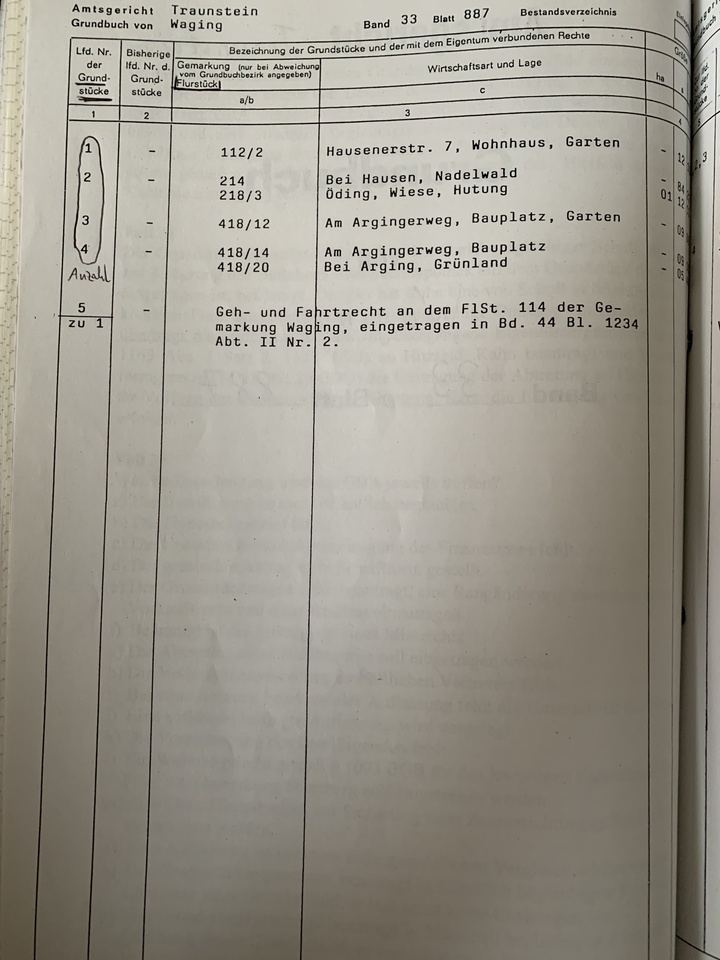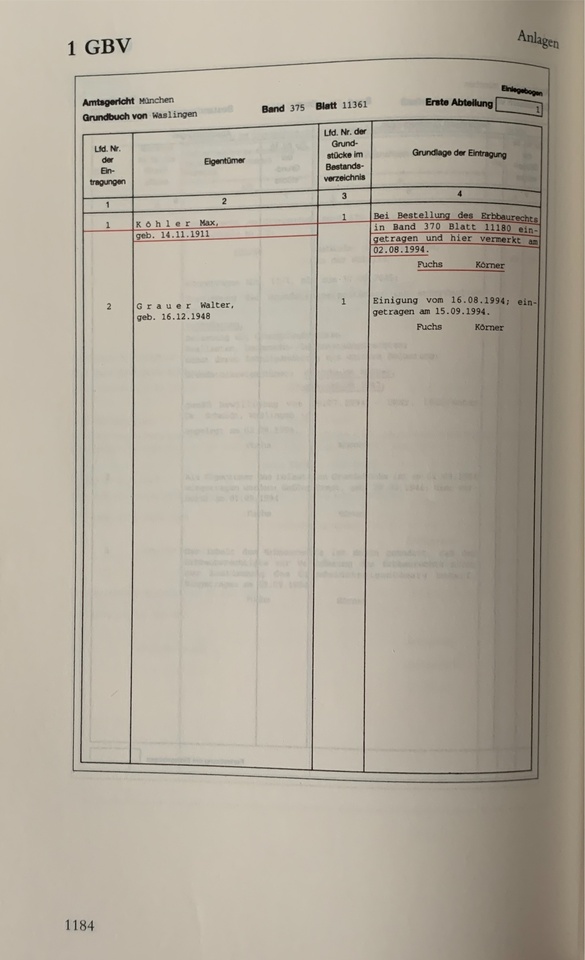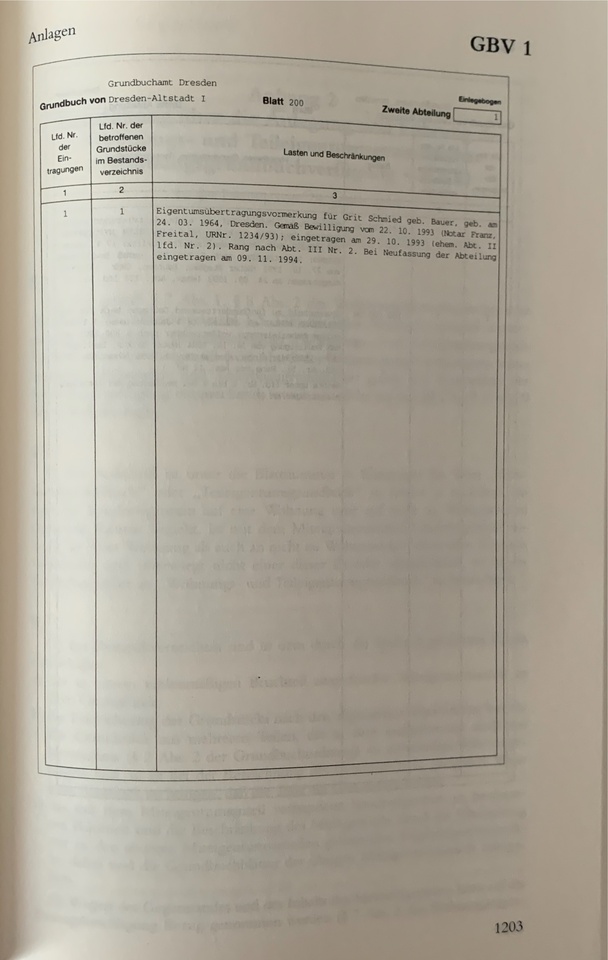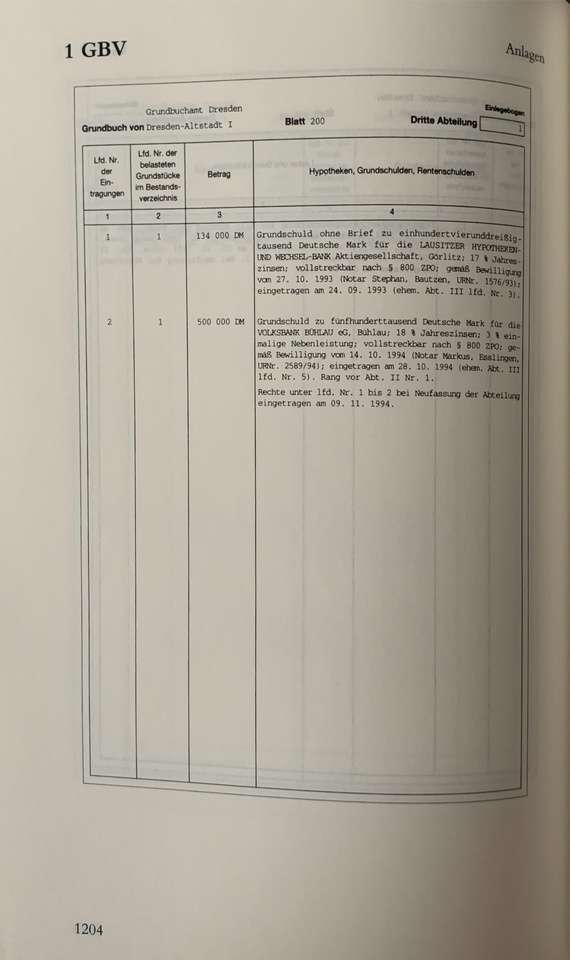Since I still have to wait a few days for a new book, which I would like to have for my article on foreclosures, I would like to address something that certainly plays a role for property owners as a small interim contribution. But it could certainly also be helpful for those who are thinking about buying.
The land register - the book that everyone wants to get into. First of all, how it works.
Nowadays, the land register is no longer a physical book, but an electronic land register, which is kept at the local court in whose district the property is located (§ 1 GBO).
If you are interested in a property, you will not be able to avoid looking at the land register beforehand. Who buys a pig in a poke? You are dependent on the seller for this, as you need a legitimate interest to look at the land register, which does not include an interest in buying.
Even though it may not seem very clear at first glance, it has a fairly simple structure.
So if you decide to buy a plot of land (or a condominium for which a land register is kept) and the conveyance is declared in the notarial deed, in most cases the notary will submit the application to the land registry on behalf of the contracting parties. Conveyance in accordance with §§ 873, 925 BGB is the term used to describe the agreement in rem that ownership is to be transferred. The purchase contract only establishes a claim under the law of obligations to the transfer of ownership. However, both are often declared in a deed.
If the application is ready for execution, the judicial officer at the land registry will red the old owner (see attachment) and register you as the new owner.
Now to the structure:
The land register is divided into
- Inventory
- Section I
- Section II
- Section III
The individual sections and the inventory (BV) are divided into columns. I have also attached a picture for each of these. For reasons of clarity, however, only the first columns are shown. The change columns are negligible here.
Inventory:
Here you will find the individual properties that are booked on the land register sheet. The parcels and their names are also listed here. A property (consecutive numbers in column 1) can consist of several parcels. A parcel is a part of the earth's surface which is entered on the cadastral map (by the land registry office) under its own number. Changes often take place here. For example, parcels are merged, divided or remeasured. This is then entered and noted in columns 7 and 8 of the BV. However, plots of land can only be divided or merged with the owner's consent. If the owner of a plot of land in the same district acquires a new plot, the plot can simply be added to the person's existing sheet under a new number.
Section I:
This contains the respective owner and the reason for the entry (succession, conveyance, etc.). Several owners are entered with their joint relationship (e.g. person A and person B to ½).
Section II:
Here you will find rights of use and other rights. These are mainly easements (rights of way, rights of way), limited personal easements (management rights, residential rights), usufruct, priority notices, pre-emption rights. In other words, all encumbrances that are not in section III. The list is not exhaustive, as it would otherwise go beyond the scope.
Section III:
This is where you will find mortgages and land charges. In the past, there were also pension debts here, which are no longer to be found today. Mortgages are also becoming increasingly rare. Mortgages and land charges can be registered either as a letter right (mortgage certificate is issued) or as a book right without a letter. Anyone who cannot pay for their property immediately and needs financing for this (the majority) will not be able to avoid a land charge. This offers the creditor security, as it can be used to realize the property by way of forced sale and the creditor thus secures a good ranking.
In sections II and III, you will also find any changes or deletions in the change columns. The right is again underlined or crossed out in red.
All rights in sections II and III are ranked in relation to each other. In the same section, the ranking depends on the order of entry. Within the different sections, it depends on the time of registration. Equal rank or possibly an exchange of rank would also be found in the change columns or directly on the right.
I think that this brief overview will be sufficient to help you find your way around in future. As always, I will try to answer any questions as best I can. Please forgive any spelling mistakes, despite having read this twice.
















